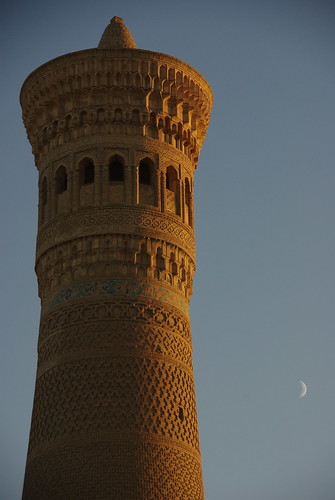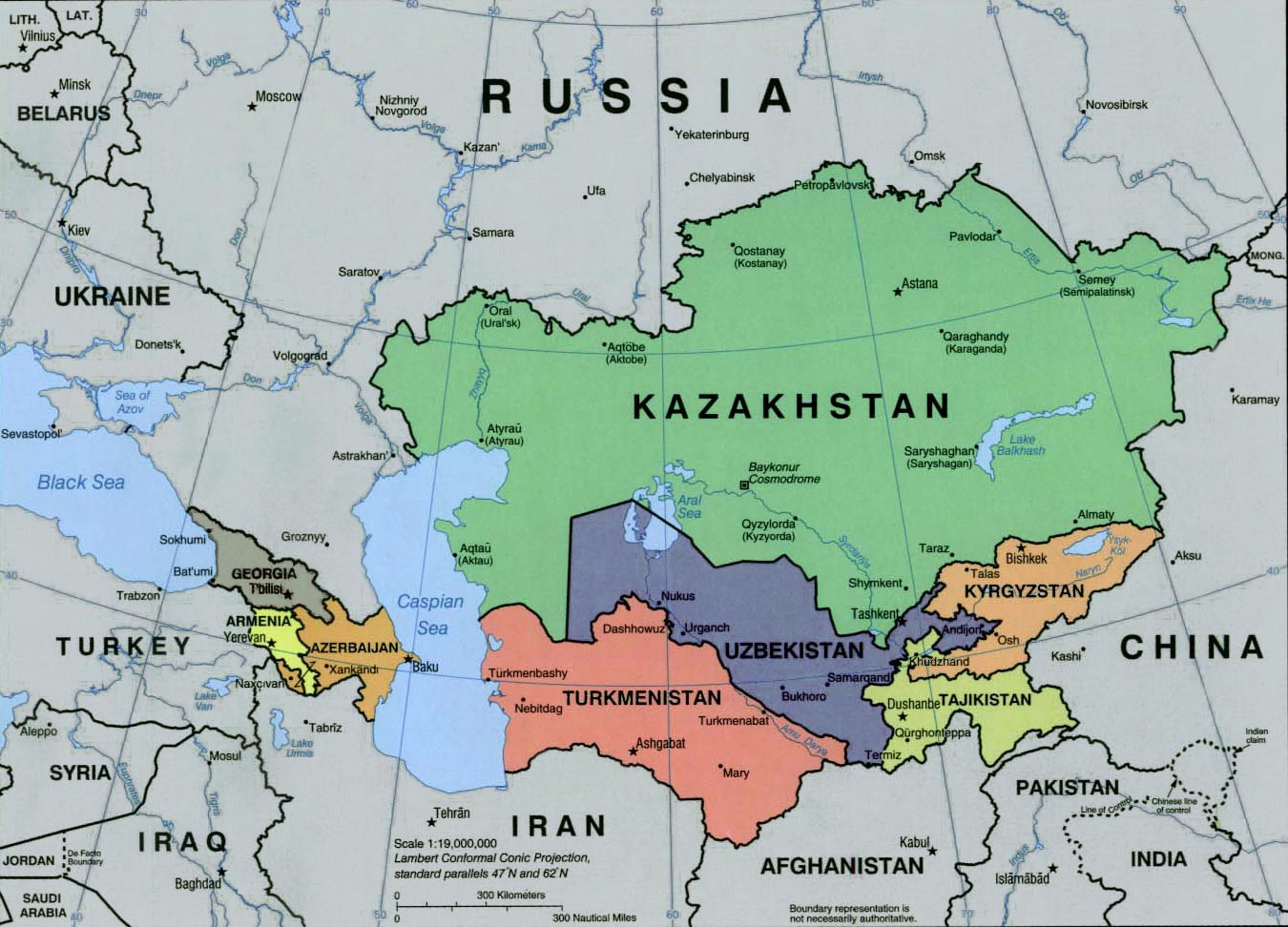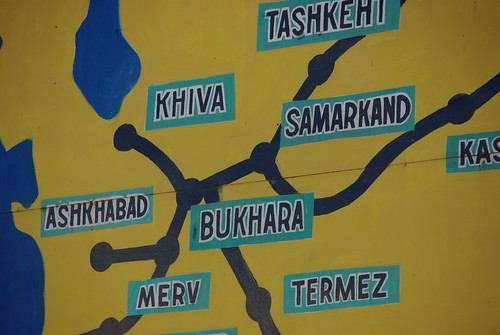 Travel in Uzbekistan is surprisingly easy and relatively comfortable. The country has lots to offer but getting in can be a bit difficult at first. This guide is intended to help you understand the country and plan your own trip.
Travel in Uzbekistan is surprisingly easy and relatively comfortable. The country has lots to offer but getting in can be a bit difficult at first. This guide is intended to help you understand the country and plan your own trip.
VISA: This is easily the worst part of travel to Uzbekistan. US Citizens can obtain their visa from the US Embassy but it will take a couple of weeks. Obtaining the visa outside of your home country is possible but you will need a Letter of Invitation (LoI)from an Uzbek Travel Agency; we used Stantours. Rules are similar for most western nationalities but these things change regularly. We picked up our visa, once our LoI from Stantours was ready, in Istanbul and only waited a few hours.
LANGUAGE: Several languages are spoken across the country, most are either Russian or Turkic dialects. If you are a native Turkish speaker you will be OK but Russian is Russian probably your best bet. Armed with only English and Spanish, we made it through the country with a combination of charades and pictionary.
MONEY: Don’t use the banks. There are no ATMs. When we were in Uzbekistan, the bank-rate was 1,600 so’m to one U$D but the market rate was 2,200 so’m to one U$D. By using the black market we were able to increase our spending power by a full third. This was simple and not a problem, most places we slept were happy to change our money (at 2,100 so’m) for us. Do be sure to come in with sufficient currency though, dollars are always best but euros are OK too. The only other places we’ve experienced this were Sudan and Malawi, in both instances the market rates were about 20% higher than the bank rate.
 TRANSPORTATION: Easy and simple. As you travel from city to city you will generally have a choice of a shared taxi or a bus. The bus will usually take about 40% longer (and therefore much safer) but will often cost half as much as the taxi as the 4-seat shared taxi. Occasionally you will also have the choice of a martshruka (mini-bus) which falls somewhere between the first two options in both speed and cost. Before going to the taxi stand/bus-stop just ask at your hotel about the prices for each. Taxis leave when they are full, catching a bus is often a matter of luck. There are trains, but not as many.
TRANSPORTATION: Easy and simple. As you travel from city to city you will generally have a choice of a shared taxi or a bus. The bus will usually take about 40% longer (and therefore much safer) but will often cost half as much as the taxi as the 4-seat shared taxi. Occasionally you will also have the choice of a martshruka (mini-bus) which falls somewhere between the first two options in both speed and cost. Before going to the taxi stand/bus-stop just ask at your hotel about the prices for each. Taxis leave when they are full, catching a bus is often a matter of luck. There are trains, but not as many.
OVIR REGISTRATION: When you stay in a hotel, they will need to register your passport for you. This is simple, but you must keep the itsy-bitsy-tiny-weenie piece of paper they give you as proof of your registration. Technically you only need show proof of lodging/registration every third night of your stay in Uzbekistan but for our money we’d rather have proof for all of our nights. If you mess up you risk fines/bribes and being deported but as you’d only be found out as you’re leaving the country anyhow….chances are you’ll just be faced with fines…err…..bribes. Our final night was spent couchsurfing in Tashkent and this worried us and sent us to the border early, in the end we were just fine. We were told that you are more likely to have problems at the airport rather than at land borders.
SITES: You will visit Bukhara and Samarkand. If you don’t, you probably should not have bothered going to Uzbekistan. In each place you will be asked to pay for each site individually, usually $1-$3…$4 at the most. You will also need to pay extra to use a camera. Most sites do not offer ISIC student discounts…but will do so if you balk at the price and are willing to take the discount in exchange for not receiving a ticket 😉
SAMARKAND: The Samarkand sites more spread out throughout the city than in Bukhara or Khiva. The Registan is the main site and might be the entire reason you came to Uzbekistan. There are other several sites in the vicinity (Bibi-Khanym Mosque, Guri Amir Mausoleum, etc) but we found the Ulugbek Observatory and Shah-I-Zinda to be a bit more interesting in comparison to the other larger sites. We also recommend a day trip to Shakhrisabz if you are tiring of the tourist circuit. The sites are less maintained and more integrated with modern city life. Easy links from Samarkand to both Tashkent and Bukhara via the taxi/bus stand at the Ulugbek Observatory.
BUKHARA: In Bukhara the sites are all located together and are filled with all kinds of souvenir shops. If you are planning to purchase anything in Uzbekistan this is probably the place to do it. Bus is 8 hours to Urgench/Khiva and 5 to Samarkand en route to Tashkent, taxi is shorter for both trips. A guide for the Ark is cheap and worth it, most other sites are fine on your own.
KHIVA: To get here your will need to travel via Urgench, the nearby transportation hub city. All sites you will want to see, and hotels you’re likely to stay in, are inside the old city. If you are without a guidebook, the tourist office in the center of the city will help you and should be able to provide you with maps and transportation information. The bazaar is just outside the walls and worth a stroll for any small supplies or to change money. No matter what, make sure you walk through the old city at night with the stars out…the dark starry sky with the bright minarets is absolutely stunning.
NUKUS & ARAL SEA: There is a tourist hotel right next to the art museum you likely came to Nukus to see. Be forewarned, the museum is closed for holidays (as happened to us) and Sundays and Mondays. Trips to the Aral Sea can be arranged from Nukus but you are basically paying a lot of money to drive a very long distance to see several rusty ships on shore (used to be in the water) and the new shoreline. We passed the sea on the train from Kazakhstan and it looked like nothing more than a lake without sufficient water. This is the site of the one of the world’s worst ecological disasters, but that doesn’t mean there is much to see and/or do. A shared taxi to/from Kungrad should cost around 10000-12000 so’m ($6) and onward to Urgench/Khiva should be about the same price.




Recent Comments